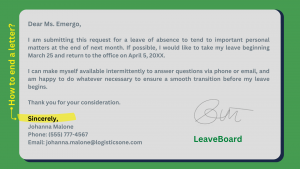How to End a Formal Email – Everything You Need to Know
How to End a Formal Email
The last words you write in an email are the ones that will stick with the recipient. Depending on the tone, these can either leave them with a positive or negative impression of you. When it comes to business emails, the right tone and etiquette is crucial for building professional relationships. This is especially true when it comes to the email closing, which can help set the stage for future interactions.
There are a few tried and true ways to end a formal email, such as Sincerely, Yours truly, Cordially, and Yours respectfully. These can work well in most situations and provide a good foundation for your own personal style.
However, it’s important to keep in mind that how to end an email etiquette is all about context. What may work for your close colleagues might not be appropriate for new or unknown recipients. For example, an informal “Cheers!” could work when communicating with a colleague you know well but would likely sound too casual to send to someone you’ve just met.

How to End a Formal Email – Everything You Need to Know
Additionally, it’s also a good idea to avoid using generic email endings such as Best wishes or Regards. These can be perceived as insincere and faceless. It’s better to add a few additional details, such as a nickname or short one-liner, which can make the recipient smile and feel seen.
Another way to make your closing stand out is to use a call-to-action. This is an opportunity to inspire the recipient to take a particular action, such as setting up a meeting time or providing more information. Adding a CTA can help ensure that the recipient doesn’t forget about your email in the future.
In the realm of email communication, the sign-off is not merely a perfunctory ending but a pivotal part of the message that can shape the overall tone and impact of your correspondence. It serves as the final note in the symphony of your words, resonating with the recipient long after they’ve finished reading. As such, mastering the art of ending an email is a skill worth honing, one that requires a nuanced understanding of context, relationship dynamics, and communication etiquette.
A great email signature should also include a link to your social media, so the recipient can find you on other platforms and connect with you in other ways. In addition to this, it’s important to include your contact details at the end of your email so the recipient can reach out if they have any questions. While an email closing might seem like a small detail, it can have a big impact on how the recipient perceives you and whether they take the next step in your professional relationship.